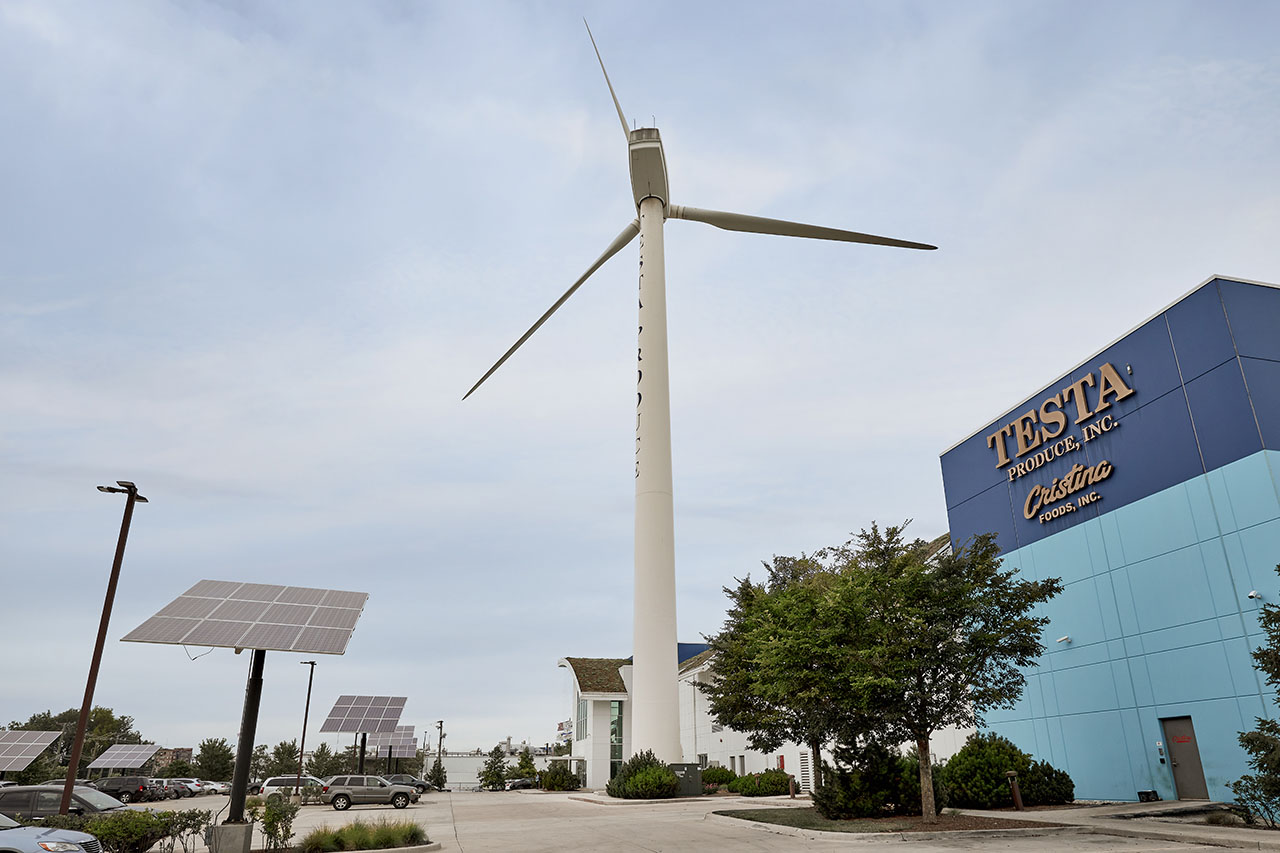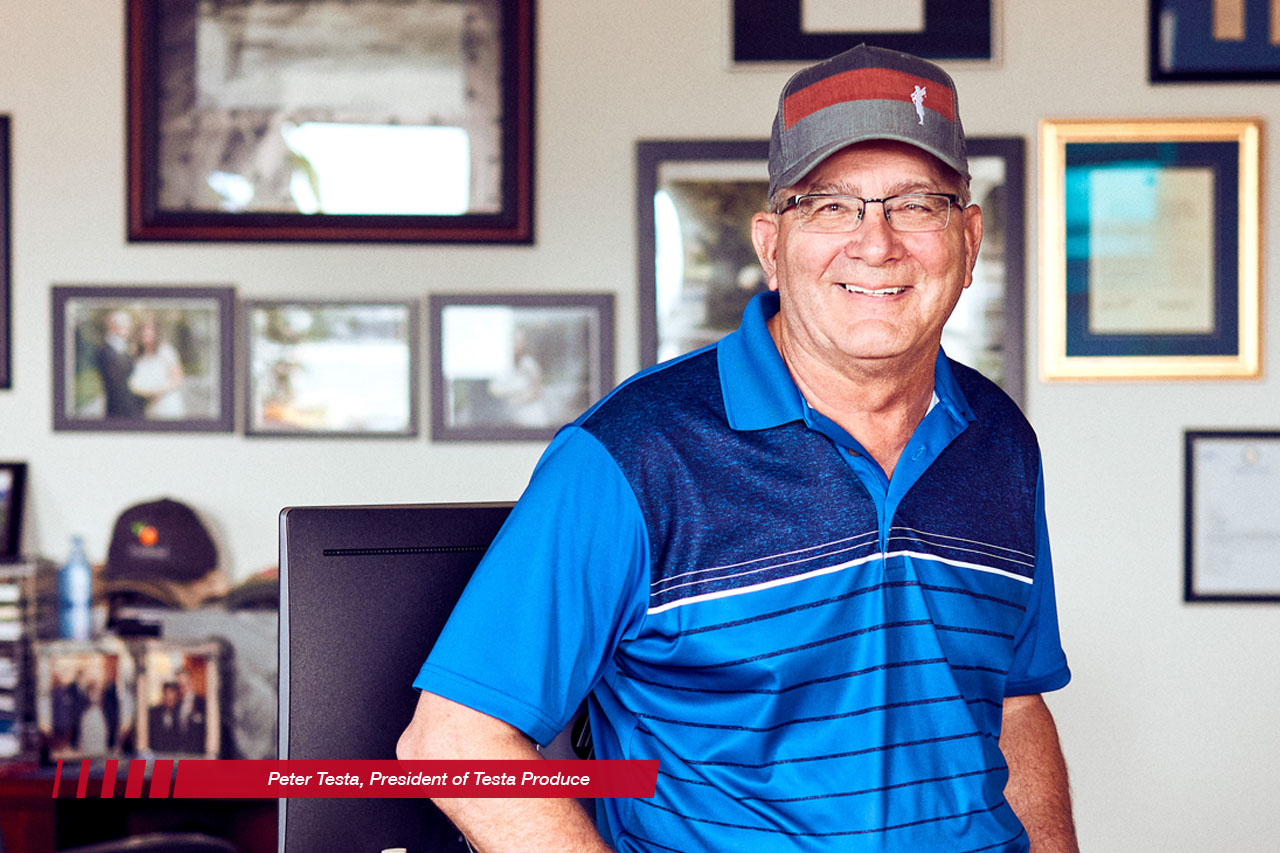

Cost-Effective Sustainability Tips from a Leader in Green Distribution
By Grainger Editorial Staff 10/16/21


Sustainability isn’t just an important topic to business leaders. It’s top of mind for consumers, partners and communities. Being eco-friendly changes how your company is perceived: the benefits from an environmental management system range from cost reduction to enhanced employee morale and public, investor and regulator image.
Yet changing the way your business runs can feel daunting. Peter Testa, president of Testa Produce, has established his wholesale produce company as a corporate leader in sustainability while overcoming challenges along the way. Because being on the cutting edge of eco-friendly practices isn’t always easy.
Below, Testa shares what inspired the first LEED Platinum-certified Refrigerated Food Distribution Facility in the U.S.—and how his team made its innovative sustainability practices possible.
What first inspired you to embrace sustainability?
Testa: Sustainability in the produce industry can take on a bunch of different meanings. You’re talking about farming, how they grow and deliver crops, what type of packaging can go into it. And then, for a distributor like myself, sustainability is all about trying to reduce your cost while respecting not just the land but the environment.
When I grew up, I worked on [Chicago’s] South Water Market, which was designed in the 1920s for horse and wagon. The docks were lower. The elevators were rope elevators. There was no modern equipment—no pallet jacks, power movers, forklifts, none of that. Everything was done by hand, so it was extremely labor-intensive. And the equipment wasn’t designed to hold the pallets. The cooling at the South Water Market, way back in the 1950s and ’60s, used a brine system. It was hugely inefficient and didn’t work all that well.
I said to myself when I was growing up, if I could ever figure out a way to make it so that we could do things quickly—make things more environmentally friendly—I would jump at the chance. And that’s what happened.

How did you learn about the best sustainability practices?
Testa: It all started about 13 years ago when I was designing the [Testa Produce] building. I learned by studying all different sustainability options: bioswales, rain harvesting, green roofs and their environmental benefits while also researching technologies like solar energy, including solar tracking and solar thermal panels, wind energy and turbines, geothermal and the power output of each.
I actually went to Greenbuild, which is a very big show in sustainability. I picked up a lot of ideas from it, mostly in which materials are rapidly renewable. I learned all about LED lighting, motion sensors and solar hot-water heating. All this research went into the building when I wanted to get to LEED Platinum because it had never been done before in any food-service establishment.
What surprised you most about what you learned?
Testa: A lot of what surprised me about all this is how much resistance I got when it came to LED lighting—or rain harvesting, or solar panels. I think that has changed now in the city and that many departments are now hugely on board with all the things that I’ve done here because they’ve come to the realization that this is very good for the environment, business and the city. It works, and it lowers the cost of operation.
How did you plan for creating more sustainable practices?
Testa: If you’re a businessperson, the main thing that you need is some benefit or payback, something that’s tangible. Our building was designed with the future in mind, meaning I didn’t go cheap on the concrete, refrigeration or how we did the drains. All those things, you pay extra for them. But overall, long term, you get a huge payback. You don’t have to fix lines in the concrete. You don’t have to fix the drainage or the walls. Doing it on the cheap means your maintenance costs can triple in five to 10 years. My maintenance costs have actually gone down. By considering maintenance during the building process, I designed and used methods and better materials that would generally reduce maintenance costs by about 10 to 15 percent compared to utilizing materials of lesser quality.
I had the opportunity to do a compressed natural gas fueling station—which is a huge investment. But I’m running 30 to 50 trucks, and when you use diesel trucks, they pollute. It creates those emissions, and the price of diesel fuel goes up and down often. Well, you can lock in the price of compressed natural gas for 10 years. Right now, I think our price is $1.60 a gallon, and diesel fuel is around $3 [at the moment]. So, when I’m looking at an investment and saying, ‘OK, what’s this going to do?’ If you multiply 40 trucks times what I was spending on diesel fuel for a year compared to compressed natural gas, the savings are huge.
Which sustainability practices are working well? What is their impact on your community?
Testa: The rain harvesting works. Solar panels work. The sustainable efforts, the recycling, that works. The solar trackers and solar hot-water system all work and are doing great. The rain harvesting reuses the water by use of the toilets. The turbine works great—and is an average of 20 percent energy savings annually. We don’t have to worry about these because the maintenance on them is so little.
When you first drive up to my building, you’re looking at a building that’s completely different than what you probably would have expected. If you don’t know of Testa Produce, you may expect an ordinary building with coolers and freezers, and that’s it. At Testa, there’s a massive wind turbine, solar panels, bioswales and pond sitting out in front, along with a green roof you can see. So, initially, that customer gets the idea that ‘wait a minute, this guy’s doing something different.’ Then, when we bring you inside for a tour, we show you all the different things [and] that customer leaves with the feeling like ‘they’re not the same.’
What have been some of the biggest challenges while implementing sustainable practices?
Testa: I’m always looking for the newest and best. The compressed natural gas thing, that’s only happened within the last two or three years. Electric trucks were another one—and there’s one that I did not have a good experience with. Part of it was that I was too early to the party. They were supposed to go 125 miles on a single charge, and then they had what they call a brake regeneration system, meaning that when you press on the brake, the motor will recharge the batteries. So, you could keep going and going.
Well, that didn’t work correctly. If you ever used the heater or turned on the air conditioning, that would drain the battery life real quick! This means that your 125-mile range would drop down to only 40 to 50 miles. If the truck didn’t recharge, it would just stop and become unmovable. At that point, the only thing to do was tow it from where it stopped, and that happened more than I liked.
What has been the most impactful sustainability practice or effort the company has put into place?
Testa: Compressed natural gas would probably be the top on my list because the payback is really, really good. Rain harvesting and solar panels combined would be number two because they basically have no maintenance to them. They’re easy to do. Everybody could do them. Number three would be the green roof. It was a great investment, and it’s worked fabulously, reducing the overall heat transfer of the building. The turbine would be number four.
How does it feel to be a part of the sustainable movement?
Testa: I’ve been in the produce business for 50 years. I’ve been dealing with growers, shippers and the way different people have different practices. I’ve been completely shocked by the number of people who have come to our building and then taken the ideas that I had here to use them. I absolutely love it. I’ll give plans to my building away. I teach people how to do stuff. That part has been extremely rewarding.
I definitely feel that people have the big initial shock of seeing the building, but then they look and say, ‘I can do some of this stuff.’ That’s the cool part: They can actually do this stuff. We just have to get them to get it out of their minds that because it’s a little bit more expensive to do at the outset, that they shouldn’t do it. Yes, you should. Everybody should do it.
What advice do you have for other companies implementing these practices or tools?
Testa: Get ahold of the person in charge. If you don’t get the person in charge onboard, you’re not going anywhere. You’re not going to be able to make any changes, and you’re going to run into resistance all day long. You must get leadership involved, and they must say, ‘Yes, this is good. We need to do this.’ That’s your number one thing to do.
Your second thing is you shouldn’t be talking about sustainability if you haven’t done your homework. You need to know what you’re talking about. What’s the payback on this? How long does it take to do? Who does this work? Which company knows how to do this? These are the types of questions you better have ready to answer so you can get upper management to say, ‘This is a good idea.’
Learn more about sustainability practices, resources and solutions.
The information contained in this article is intended for general information purposes only and is based on information available as of the initial date of publication. No representation is made that the information or references are complete or remain current. This article is not a substitute for review of current applicable government regulations, industry standards, or other standards specific to your business and/or activities and should not be construed as legal advice or opinion. Readers with specific questions should refer to the applicable standards or consult with an attorney.






